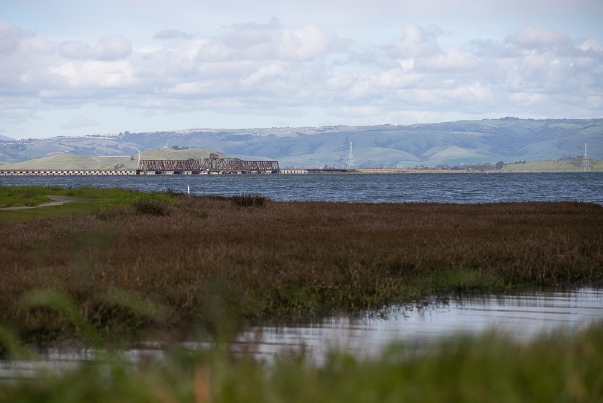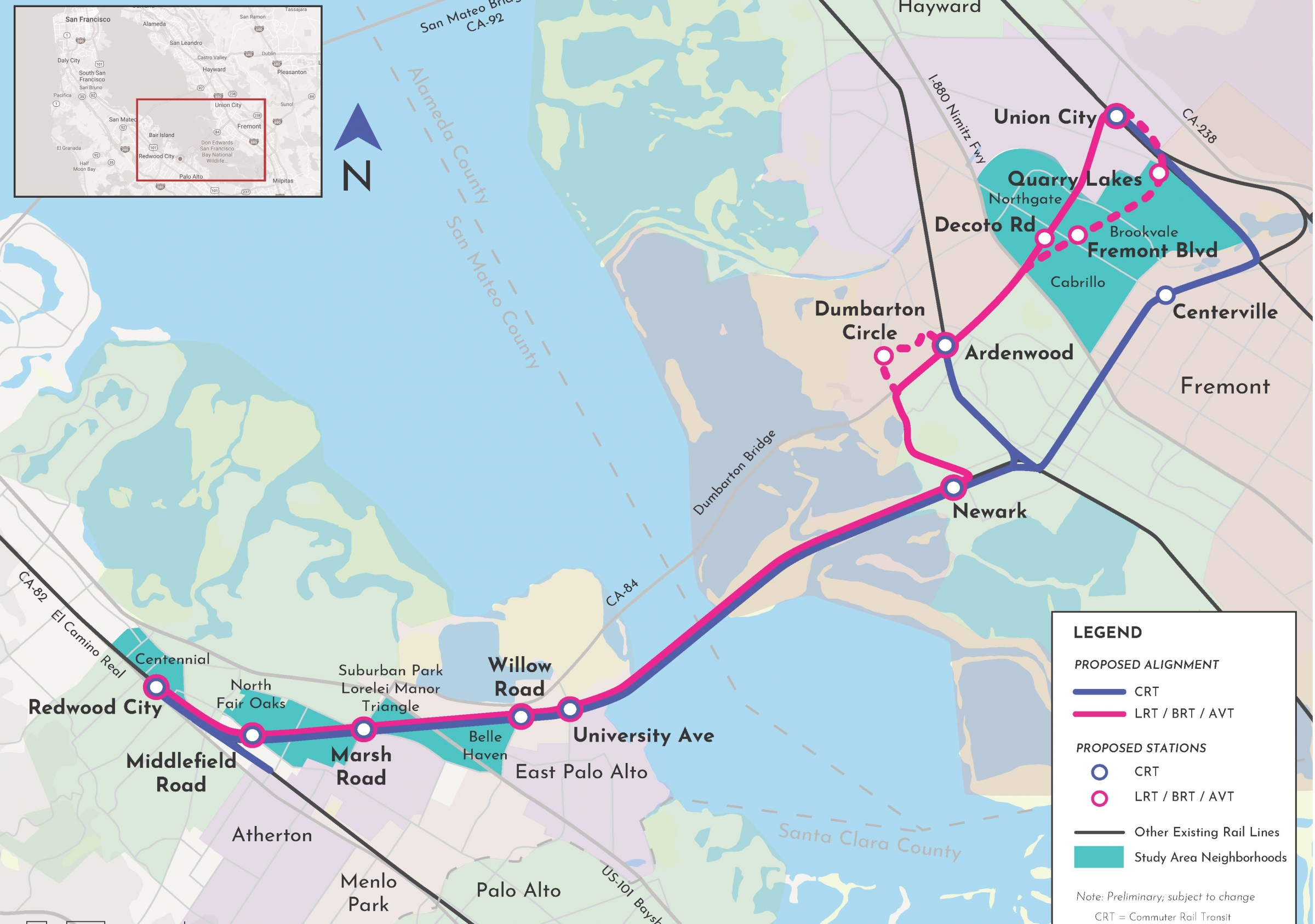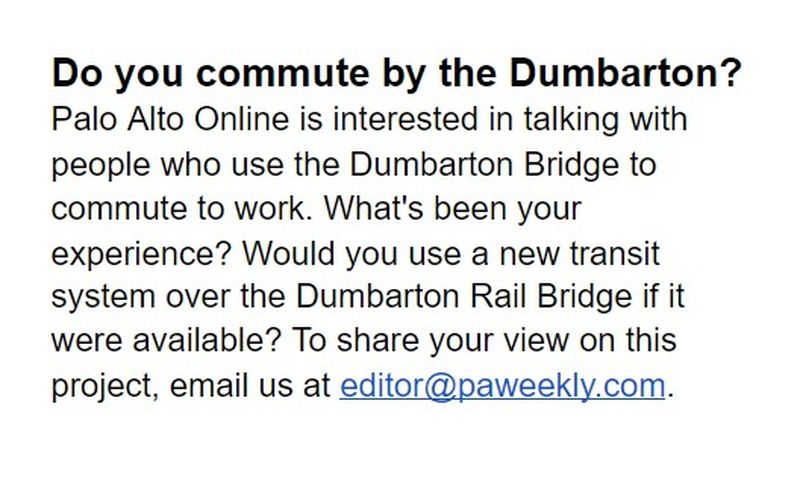The San Mateo County Transit District (SamTrans) will host a virtual public meeting to discuss the Dumbarton Rail Corridor project on Monday, March 15, starting at 6 p.m.
The project envisions creating an approximately 18-mile route between Redwood City and Union City for a new transit system that would connect Caltrain to BART. Transit stops would be located in Menlo Park, East Palo Alto, Newark, Fremont and Union City. An estimated 24,000 riders could use the system every day, according to a February 2020 projection by SamTrans.
The Dumbarton Rail Corridor effort kicked off in 2018, when SamTrans entered into an agreement with Facebook and the Plenary Group, a public infrastructure investor and developer. Their partnership, called Cross Bay Transit Partners, was formed to facilitate the necessary state and federal environmental impact analyses, as well as a fiscal impact analysis, to determine if it would be feasible to rebuild the defunct transbay rail line for the new cross-bay route.
Although Facebook announced last May that it was reconsidering its commitment to pay for the analyses, citing the need to redirect its resources because of the pandemic, it later clarified that it would remain in the partnership until the pre-environmental analysis work was completed.
That early phase is currently underway with the development of conceptual alternatives. The partnership hopes to finalize the alternatives this spring.
Monday's community meeting will take public input on two potential routes and four transportation options: commuter rail transit, light rail transit, bus rapid transit and autonomous vehicle transit. Commuter rail typically operates on traditional train tracks, while light rail generally requires its own track system with overhead electricity lines. Autonomous vehicle transit is an emerging technology that uses independently operating pods to transport small groups of riders.
The end goal of the project is to provide crossbay transit service that could connect Caltrain to ACE, BART, Capitol Corridor and, eventually, California High Speed Rail, the project website states.
Funding for the potentially $3 billion project remains a bit of an unknown, although transit leaders say that the project is eligible for public funding under the recently passed Regional Measure 3 (bridge toll tax) and San Mateo County's Measure W, as well as Federal Transportation Administration Capital Investment Grants and other US Department of Transportation programs.
The original Dumbarton rail bridge opened in 1910 but fell into disrepair and was heavily damaged in a fire in 1998. SamTrans bought the rail right-of-way in 1994 but hasn't had funds to redevelop it, though several studies on potential rail projects have been completed over the years. The current Dumbarton road bridge lies to the north of the rail bridge and, before the pandemic, was routinely clogged with commuting drivers during weekday rush hours.
Local transportation leaders have said that the Dumbarton Rail Corridor project could significantly relieve that traffic congestion by providing a much-needed commute alternative.
The public can attend the virtual meeting, which is scheduled for 6-7:30 p.m., by going to bit.ly/DRCMeetingMarch2021 or calling Zoom at 669-900-6833 and entering webinar ID 968 8464 7203.




Comments
Registered user
Old Mountain View
on Mar 16, 2021 at 3:54 pm
Registered user
on Mar 16, 2021 at 3:54 pm
Another case of "everything old is new again."
The proposal is characterized as a public-transit route connecting Peninsula to East Bay. As I understand, the original 1910 Dumbarton Rail Bridge (which connected Peninsula to East Bay 111 years ago) enabled transcontinental freight (linking US rail services to the peninsula's north-south line -- now Caltrain -- and thus to SF) when trains were the main overland freight method (long before the interstate freeway system).
In 1910, San Francisco had been for 60 years the major population center and port on North America's Pacific coast. The rail bridge connected the busy Port of SF with the mainland US by rail. A big deal at the time (long before the Bay Bridge or Golden Gate Bridge existed).
If you'd predicted in 1910 that the growing local rail systems would be abandoned in the 1950s for private cars, you'd have been laughed at. Just as if in turn you'd predicted in the 1950s that private car commutes might later revert back to rail travel.